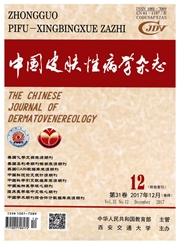

 中文摘要:
中文摘要:
目的观察新生隐球菌H99野生株和PMT4缺陷株所形成的生物膜在抗真菌药物敏感性方面的差异。方法采用PCR介导的长侧翼同源重组的方法敲除新生隐球菌H99的PMT4基因;采用基础培养基96孔板培养的方法建立生物膜体外模型;免中心静脉插管、管内放置聚苯乙烯薄膜的方法建立生物膜动物模型;用M27A2药敏方案和MTT方法捡测生物膜的药物敏感性。结果M27A2方案:氟康唑、两性霉素B、5氟胞嘧啶、伊曲康唑对缺陷株游离细胞和野生株游离细胞的MIC之间以及生物膜细胞与游离细胞MIC之间的差异不大。体内外模型的MTT检测均发现,缺陷株生物膜细胞对不同的抗真菌药物的敏感性比野生株明显增高,可达16~64倍.结论M27A2万案不适用于生物膜细胞的药敏试验,而MTT方法可作为有效的替代方案;PMT4基因对新生隐球菌生物膜的药物抵抗至关重要,PMT4及其产物可能成为新的药物靶点。
 英文摘要:
英文摘要:
Objective To investigate the difference between H99 biofilms and PMT4 mutant's in the resistance against antifungal drugs. Methods Long flanking homology (LFH-)PCR was used to get the PMT4 mutant. Animal model was built by setting a catheter (with polystyrene film in lumens) into rabbit's central venous. M27A2 program was used to test MIC of planktonic cells of H99 and PMT4 mutant and of their biofilms. MTT test was used to investigate the metabolic activity of H99 biofilm ceils and PMT4 mutant biofilm cells, which can show the susceptibility of H99 and PMT4 mutant cells in both in vitro model and in vivo model. Results M27A2 test (with FCZ, AmB,5-FC, ITR)showed indistinctly different MIC between wild strain and mutant or between planktonic cells and biofilm cells. But, MTT test showed that biofihn cells of mutant was much more susceptible to antifungal drags than those of wild strain, in vitro and in vivo. Conclusion M27A2 is not appropriate for biofihn cells ; PMT4 gene plays an essential role in the resistance of C. neoforroans biofilm against antifungal agents. And because of the remarkable difference in properties and function of products between fungal PMT gene and its analogous gene in mammals, PMT4 gene and its products can be reasonably regarded as potential targets of new therapeutics.
 同期刊论文项目
同期刊论文项目
 同项目期刊论文
同项目期刊论文
 期刊信息
期刊信息
